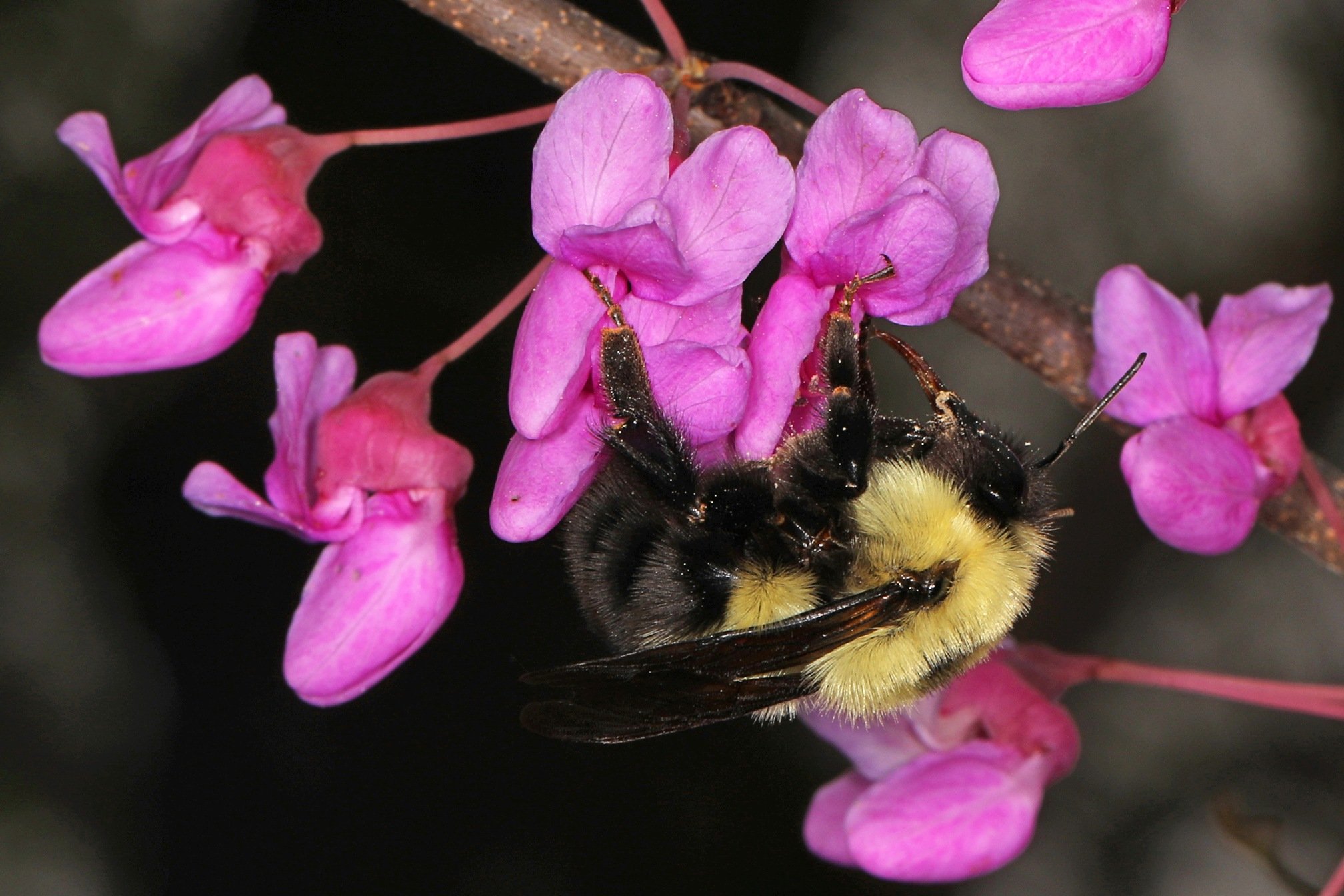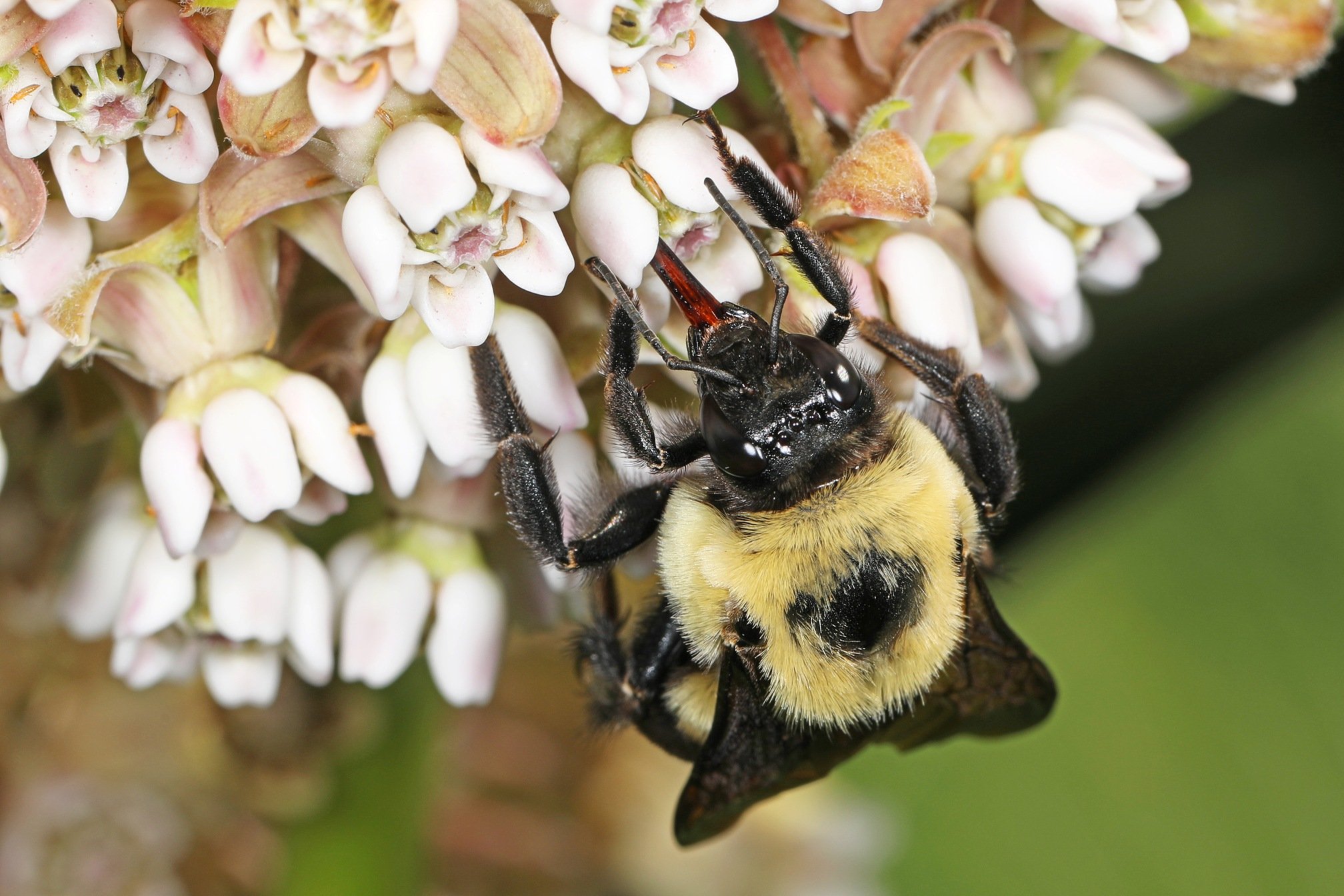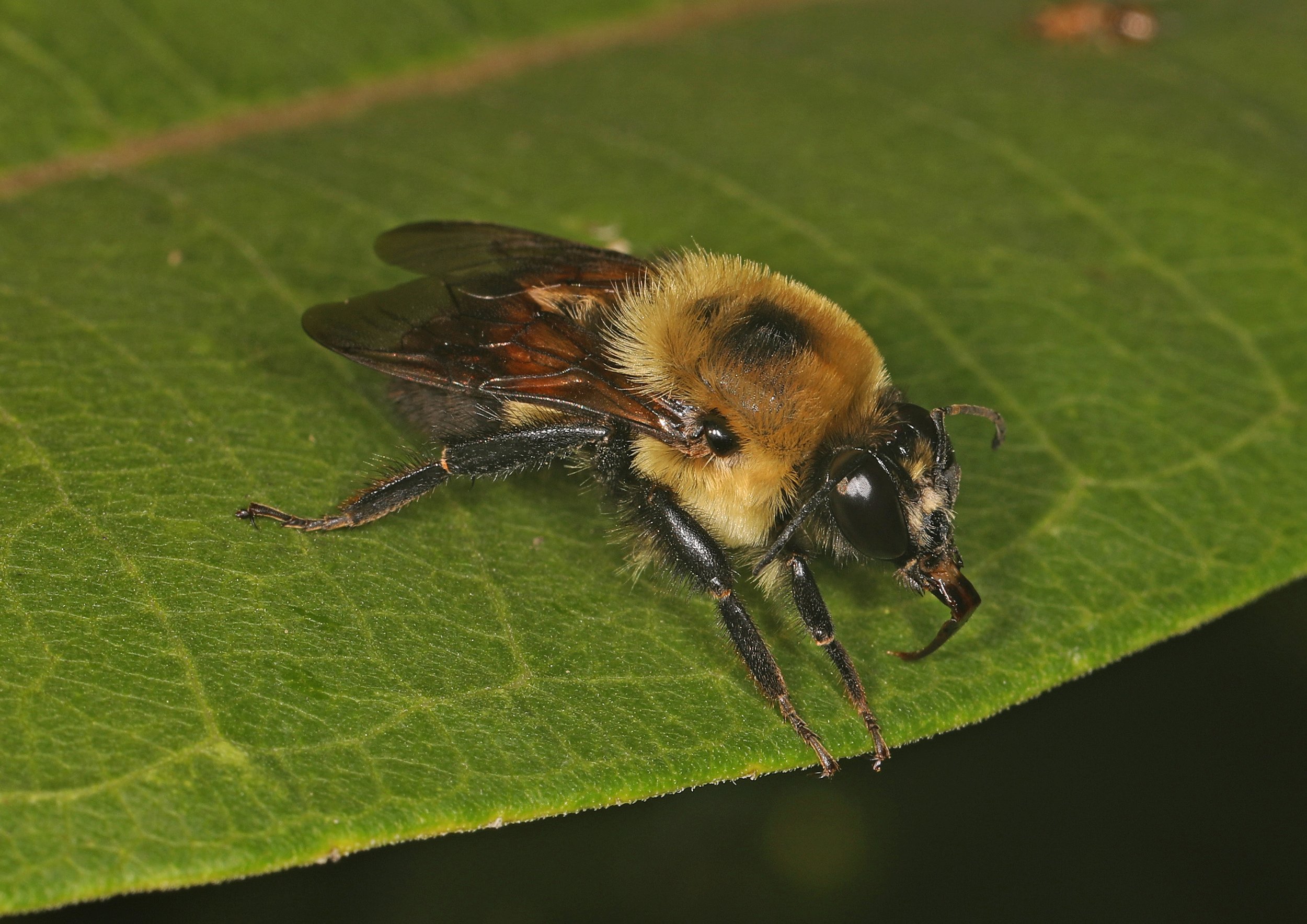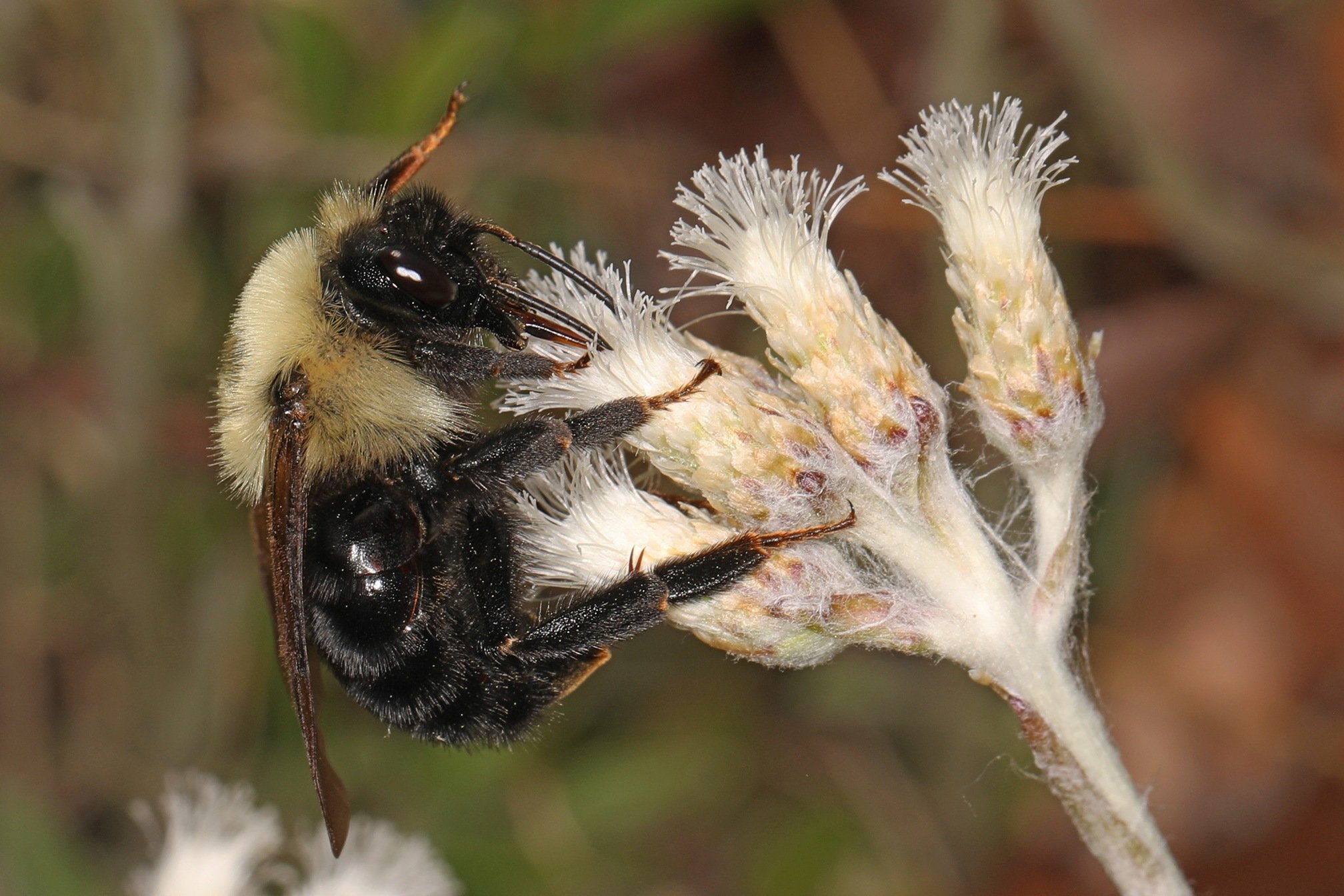Photo: American Bumble Bee, Judy Gallagher
Judy Gallagher is an ASNV board member and a regular surveyor of local wildlife who also captures photos of what she sees, in particular the less common species.
Two-spotted Bumble Bee - Bombus bimaculatus on Redbud, Judy Gallagher
This month's column was inspired by a large Bumble Bee seen recently at Meadowood. At this time of year, it would be a queen bee who has hibernated over the previous winter. She will choose a nest site, typically underground, and will build a mound of pollen and secreted wax on which to lay eggs. The eggs hatch, and the larvae feed for a couple of weeks, build cocoons, and develop into adult female worker bees. The worker bees collect pollen and nectar, enabling the queen to stay inside the nest for the rest of the season, laying hundreds of eggs. Other broods that hatch include male bees and new queens. The new queens mate in late summer, feed heavily to prepare for hibernation, and form new colonies the following spring.
Bumble Bees are large and furry, and most are black and yellow. Their fuzzy coats enable them to be out when temperatures are cool, and they warm up by basking in the sun and contracting their flight muscles without flapping their wings. Unlike Honey Bees, female Bumble Bee stingers are smooth, so they can sting more than once. But they aren't aggressive, and rarely sting.
Brown-belted Bumble Bee - Bombus griseocollis on Milkweed, Judy Gallagher
Bumble Bees are generalists when it comes to food, collecting nectar and pollen from whatever flowers are available at the time. The nectar is nutrition for the adult Bumble Bee, and the pollen feeds the larvae. A Bumble Bee can carry up to half its body weight in nectar and pollen. Some species, for instance the Brown-belted Bumble Bee, show a preference for milkweed, thistles and sunflowers. Flower preferences are often related to the tongue length of different species. A long-tongued Bumble Bee can access tubular flowers' nectar, whereas a short-tongued Bumble Bee would need to depend on flowers that are easier to access.
Bumble Bee - Bombus species nectar robbing, Judy Gallagher
To get around this restriction, some Bumble Bees "nectar rob," cutting a hole in a flower in order to get to nectar. This means that the flower does not get pollinated.
Brown-belted Bumble Bee - Bombus griseocollis folding up its tongue in preparation for flight, Judy Gallagher
When the Bumble Bee is flying, the tongue folds up under its head and body. Speaking of flying, sources differ on how fast Bumble Bees fly. Estimates range between 6 and 20 miles per hour. Bumble Bees are important pollinators, especially for crops such as tomatoes, red clover, and blueberries.
American Bumble Bee - Bombus pensylvanicus, Judy Gallagher
We have fourteen Bumble Bee species in Virginia, eight of which I've seen at Meadowood. They include the American Bumble Bee, which the U.S. Fish and Wildlife Service is considering for endangered species status, and the Great Northern Bumble Bee, which is considered "vulnerable" from a conservation standpoint.
Lemon Cuckoo Bumble Bee - Bombus citrinus, Judy Gallagher
Because I'm not good at Bumble Bee identification, I submit my observations to iNaturalist. I usually only specify the genus, leaving species-level identification to the experts. And I sometimes get unexpected IDs. In mid-January of this year, an observation from 2021 was identified as the Lemon Cuckoo Bumble Bee, a species that I hadn't previously seen, or at least I didn't know that I had seen it. It has a different life cycle from the other Bumble Bees described here.
The Lemon Cuckoo Bumble Bee queen invades a colony of either Common Eastern Bumble Bee or Half-black Bumble Bee, kills the resident queen, her eggs and larvae, and takes control over the workers. She acquires the host scent by "mauling" or rubbing her body against the host workers, which suppresses the host workers' ovarian development. The Lemon Cuckoo Bumble Bee then lays eggs which are cared for by the host workers.
Most Bumble Bee species are declining in numbers. Pesticides, diseases, monoculture agriculture, habitat loss, and climate change are some of the threats faced by bees. You can help bees by planting native plants, providing them with nectar and pollen sources.
View more of Judy’s Observations from Meadowood articles here.







